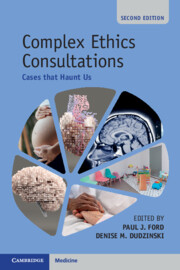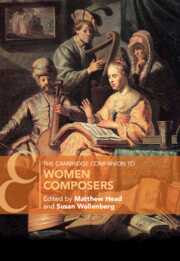Refine search
Actions for selected content:
97 results
Chapter 21 - I Will Just Go Home and Die
-
-
- Book:
- Complex Ethics Consultations
- Published online:
- 22 December 2025
- Print publication:
- 22 January 2026, pp 142-148
-
- Chapter
- Export citation
13 - The standing army: France and Brandenburg-Prussia – a comparison
-
-
- Book:
- The Cambridge History of War
- Published online:
- 18 July 2025
- Print publication:
- 14 August 2025, pp 342-365
-
- Chapter
- Export citation
4 - Spain’s wars and the rise of the Hispanic world empires, 1516–1828
-
-
- Book:
- The Cambridge History of War
- Published online:
- 18 July 2025
- Print publication:
- 14 August 2025, pp 122-144
-
- Chapter
- Export citation
14 - Navies, technology, and organisation, 1648–1815
-
-
- Book:
- The Cambridge History of War
- Published online:
- 18 July 2025
- Print publication:
- 14 August 2025, pp 366-386
-
- Chapter
- Export citation
7 - Military finance, organisation, and state development, 1450–1650
-
-
- Book:
- The Cambridge History of War
- Published online:
- 18 July 2025
- Print publication:
- 14 August 2025, pp 191-204
-
- Chapter
- Export citation
Chapter 4 - Medical Professionalism and Compassion
- from Part I - Compassion in Healthcare
-
- Book:
- Handbook of Compassion in Healthcare
- Published online:
- 27 June 2025
- Print publication:
- 17 July 2025, pp 35-43
-
- Chapter
-
- You have access
- Open access
- HTML
- Export citation
3 - Publishing for Professional Advantage
-
- Book:
- Selling Sexual Knowledge
- Published online:
- 24 June 2025
- Print publication:
- 10 July 2025, pp 90-120
-
- Chapter
-
- You have access
- Open access
- HTML
- Export citation
Money, Solidarity, and Half a Century of Health Reform
-
- Journal:
- American Journal of Law & Medicine / Volume 51 / Issue 2 / July 2025
- Published online by Cambridge University Press:
- 16 September 2025, pp. 314-336
- Print publication:
- July 2025
-
- Article
- Export citation
Chapter 11 - Effective Communication during a Health Emergency
- from Part IV - Crisis Leadership
-
- Book:
- Risk Communication in Public Health Emergencies
- Published online:
- 05 June 2025
- Print publication:
- 19 June 2025, pp 281-304
-
- Chapter
- Export citation
Introduction
-
-
- Book:
- Complex Ethics Consultations
- Published online:
- 17 May 2025
- Print publication:
- 05 June 2025, pp 1-3
-
- Chapter
- Export citation

Complex Ethics Consultations
- Cases that Haunt Us
-
- Published online:
- 17 May 2025
- Print publication:
- 05 June 2025
1 - Public Funds, Public Functions, Private Actors
- from Part I - What Is Private Law?
-
-
- Book:
- Health Law as Private Law
- Published online:
- 16 March 2025
- Print publication:
- 27 March 2025, pp 7-19
-
- Chapter
-
- You have access
- Open access
- HTML
- Export citation
Against the Phrase “Aggressive Care”
-
- Journal:
- Cambridge Quarterly of Healthcare Ethics / Volume 34 / Issue 3 / July 2025
- Published online by Cambridge University Press:
- 03 January 2025, pp. 513-515
-
- Article
-
- You have access
- Open access
- HTML
- Export citation
Concept Mapping: An Innovative Approach to Clinical Case Analysis in an Undergraduate Medical Education Curriculum in Social Sciences, Humanities, Ethics, and Professionalism
-
- Journal:
- Cambridge Quarterly of Healthcare Ethics / Volume 34 / Issue 3 / July 2025
- Published online by Cambridge University Press:
- 02 December 2024, pp. 405-411
-
- Article
-
- You have access
- Open access
- HTML
- Export citation

Professionalising English Language Teaching
- Concepts and Reflections for Action in Teacher Education
-
- Published online:
- 24 October 2024
- Print publication:
- 21 November 2024

The Cambridge Companion to Women Composers
-
- Published online:
- 23 May 2024
- Print publication:
- 30 May 2024
Bioethics: No Method—No Discipline?
-
- Journal:
- Cambridge Quarterly of Healthcare Ethics / Volume 34 / Issue 1 / January 2025
- Published online by Cambridge University Press:
- 22 March 2024, pp. 99-108
-
- Article
-
- You have access
- Open access
- HTML
- Export citation
Do Physicians Have a Duty to Support Secondary Use of Clinical Data in Biomedical Research? An Inquiry into the Professional Ethics of Physicians
-
- Journal:
- Journal of Law, Medicine & Ethics / Volume 52 / Issue 1 / Spring 2024
- Published online by Cambridge University Press:
- 31 May 2024, pp. 101-117
- Print publication:
- Spring 2024
-
- Article
-
- You have access
- Open access
- HTML
- Export citation
1 - Introduction
-
- Book:
- Black Soldiers in the Rhodesian Army
- Published online:
- 01 February 2024
- Print publication:
- 08 February 2024, pp 1-50
-
- Chapter
- Export citation
Conclusion
-
- Book:
- Black Soldiers in the Rhodesian Army
- Published online:
- 01 February 2024
- Print publication:
- 08 February 2024, pp 249-259
-
- Chapter
- Export citation
